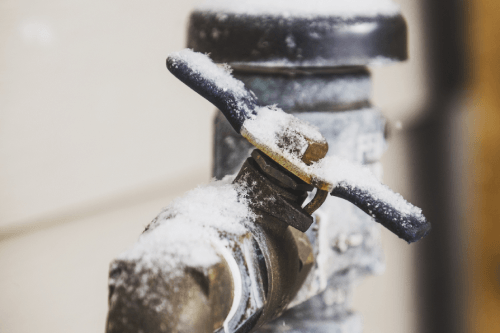Tips to Keep Pipes from Freezing Issues: Essential Tips
Tips to Keep Pipes from Freezing Issues: Essential Tips
Blog Article
How do you feel with regards to Preventing and dealing with frozen pipes?

Winter can wreak havoc on your plumbing, specifically by freezing pipelines. Below's exactly how to avoid it from happening and what to do if it does.
Intro
As temperature levels decrease, the threat of frozen pipelines boosts, potentially leading to costly fixings and water damages. Recognizing how to avoid icy pipelines is crucial for house owners in chilly climates.
Avoidance Tips
Insulating vulnerable pipes
Cover pipelines in insulation sleeves or make use of heat tape to shield them from freezing temperatures. Focus on pipelines in unheated or exterior areas of the home.
Home heating strategies
Maintain indoor areas appropriately heated up, particularly areas with pipes. Open up closet doors to permit cozy air to distribute around pipelines under sinks.
Exactly how to recognize icy pipes
Look for decreased water flow from faucets, unusual smells or sounds from pipelines, and visible frost on exposed pipelines.
Long-Term Solutions
Structural modifications
Think about rerouting pipelines far from outside wall surfaces or unheated areas. Add added insulation to attic rooms, cellars, and crawl spaces.
Upgrading insulation
Buy high-grade insulation for pipes, attics, and wall surfaces. Correct insulation assists keep regular temperatures and lowers the risk of icy pipelines.
Safeguarding Exterior Pipes
Garden tubes and outside faucets
Disconnect and drain yard tubes before winter season. Mount frost-proof faucets or cover exterior faucets with shielded caps.
Recognizing Icy Pipes
What creates pipelines to freeze?
Pipelines freeze when subjected to temperature levels listed below 32 ° F (0 ° C) for prolonged durations. As water inside the pipelines freezes, it broadens, putting pressure on the pipeline wall surfaces and possibly triggering them to break.
Threats and problems
Icy pipes can lead to supply of water interruptions, property damage, and pricey fixings. Burst pipes can flooding homes and trigger extensive structural damages.
Indicators of Frozen Pipes
Recognizing frozen pipes early can stop them from rupturing.
What to Do If Your Pipes Freeze
Immediate actions to take
If you suspect frozen pipelines, maintain faucets open up to eliminate pressure as the ice melts. Use a hairdryer or towels soaked in warm water to thaw pipes slowly.
Conclusion
Avoiding icy pipes needs positive actions and fast reactions. By understanding the causes, indicators, and preventive measures, property owners can shield their pipes throughout cold weather.
5 Ways to Prevent Frozen Pipes
Drain Outdoor Faucets and Disconnect Hoses
First, close the shut-off valve that controls the flow of water in the pipe to your outdoor faucet. Then, head outside to disconnect and drain your hose and open the outdoor faucet to allow the water to completely drain out of the line. Turn off the faucet when done. Finally, head back to the shut-off valve and drain the remaining water inside the pipe into a bucket or container. Additionally, if you have a home irrigation system, you should consider hiring an expert to clear the system of water each year.
Insulate Pipes
One of the best and most cost-effective methods for preventing frozen water pipes is to wrap your pipes with insulation. This is especially important for areas in your home that aren’t exposed to heat, such as an attic. We suggest using foam sleeves, which can typically be found at your local hardware store.
Keep Heat Running at 65
Your pipes are located inside your walls, and the temperature there is much colder than the rest of the house. To prevent your pipes from freezing, The Insurance Information Institute suggests that you keep your home heated to at least 65 degrees, even when traveling. You may want to invest in smart devices that can keep an eye on the temperature in your home while you’re away.
Leave Water Dripping
Moving water — even a small trickle — can prevent ice from forming inside your pipes. When freezing temps are imminent, start a drip of water from all faucets that serve exposed pipes. Leaving a few faucets running will also help relieve pressure inside the pipes and help prevent a rupture if the water inside freezes.
Open Cupboard Doors
Warm your kitchen and bathroom pipes by opening cupboards and vanities. You should also leave your interior doors ajar to help warm air circulate evenly throughout your home.
:strip_icc()/snow-outdoor-faucet-pipes-4af65d1e5e904fb1aa7bf74071fe5d89.jpg)
We had been made aware of that article about How To Avoid Freezing Pipes from a good friend on another web property. Those who enjoyed reading our blog entry kindly remember to pass it around. I take joy in reading our article about How to Prevent Your Pipes From Freezing.
Visit Site Report this page